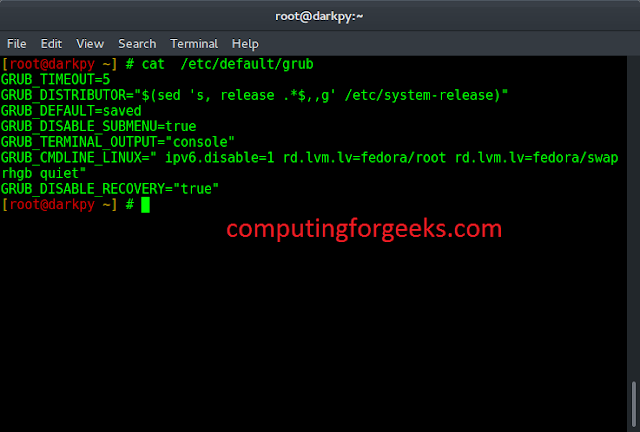Given two arrays x[] and y[] where x[i] represents the x coordinate and y[i] represent the corresponding y coordinate of a 2-D point, the task is to print the coordinate points in ascending order followed by their frequencies.
Examples:
Input: x[] = {1, 2, 1, 1, 1}, y[] = {1, 1, 3, 1, 3}
Output:
1 1 2
1 3 2
2 1 1
Input: x[] = {-1, 2, 1, -1, 2}, y[] = {-1, 1, -3, -1, 3}
Output:
-1 -1 2
1 -3 1
2 1 1
2 3 1
Approach: The idea is to use a map having key as pair (x[i], y[i]), and mapped value as integer frequency of the same point. Key-value will store the pair of coordinates and the mapped value will store their respective frequencies.
Below is the implementation of the above approach:
C++
// C++ implementation of the approach#include <bits/stdc++.h>using namespace std;// Function to print the coordinates along with// their frequency in ascending ordervoid Print(int x[], int y[], int n){ // map to store the pairs // and their frequencies map<pair<int, int>, int> m; // Store the coordinates along // with their frequencies for (int i = 0; i < n; i++) m[make_pair(x[i], y[i])]++; map<pair<int, int>, int>::iterator i; for (i = m.begin(); i != m.end(); i++) { cout << (i->first).first << " " << (i->first).second << " " << i->second << "\n"; }}// Driver codeint main(){ int x[] = { 1, 2, 1, 1, 1 }; int y[] = { 1, 1, 3, 1, 3 }; int n = sizeof(x) / sizeof(int); Print(x, y, n); return 0;} |
Java
/*package whatever //do not write package name here */import java.io.*;import java.util.*;class Pair { int x; int y; Pair(int x, int y) { this.x = x; this.y = y; } @Override public boolean equals(Object o) { if (o == this) return true; if (!(o instanceof Pair)) return false; Pair p = (Pair) o; return x == p.x && y == p.y; } @Override public int hashCode() { return Objects.hash(x, y); }}class GFG { // Function to print the coordinates along with // their frequency in ascending order public static void print(int[] x, int[] y, int n) { // map to store the pairs // and their frequencies Map<Pair, Integer> m = new HashMap<>(); // Store the coordinates along // with their frequencies for (int i = 0; i < n; i++) { Pair p = new Pair(x[i], y[i]); m.put(p, m.getOrDefault(p, 0) + 1); } // Sort the map by key and print the values Map<Pair, Integer> sortedMap = new TreeMap<>(new Comparator<Pair>() { @Override public int compare(Pair o1, Pair o2) { if (o1.x != o2.x) return o1.x - o2.x; return o1.y - o2.y; } }); sortedMap.putAll(m); // Traversing the whole map for (Map.Entry<Pair, Integer> entry : sortedMap.entrySet()) { Pair p = entry.getKey(); Integer count = entry.getValue(); System.out.println(p.x + " " + p.y + " " + count); } } // Driver code public static void main(String[] args) { int[] x = {1, 2, 1, 1, 1}; int[] y = {1, 1, 3, 1, 3}; int n = x.length; print(x, y, n); }} |
Python3
# Python3 implementation of the approach# Function to print the coordinates along with# their frequency in ascending orderdef Print(x, y, n): # map to store the pairs # and their frequencies m = dict() # Store the coordinates along # with their frequencies for i in range(n): m[(x[i], y[i])] = m.get((x[i], y[i]), 0) + 1 e = sorted(m) for i in e: print(i[0], i[1], m[i])# Driver codex = [1, 2, 1, 1, 1]y = [1, 1, 3, 1, 3]n = len(x)Print(x, y, n)# This code is contributed # by mohit kumar |
C#
// C# implementation of // the above approachusing System;using System.Collections.Generic;class GFG{public class store : IComparer<KeyValuePair<int, int>>{ public int Compare(KeyValuePair<int, int> x, KeyValuePair<int, int> y) { if(x.Key != y.Key) { return x.Key.CompareTo(y.Key); } else { return x.Value.CompareTo(y.Value); } }}// Function to print the // coordinates along with// their frequency in // ascending orderstatic void Print(int []x, int []y, int n){ // Map to store the pairs // and their frequencies SortedDictionary<KeyValuePair<int, int>, int> m = new SortedDictionary<KeyValuePair<int, int>, int>(new store()); // Store the coordinates along // with their frequencies for (int i = 0; i < n; i++) { KeyValuePair<int, int> tmp = new KeyValuePair<int, int>(x[i], y[i]); if(m.ContainsKey(tmp)) { m[tmp]++; } else{ m[tmp] = 1; } } foreach(KeyValuePair<KeyValuePair<int, int>, int> i in m) { Console.Write(i.Key.Key + " " + i.Key.Value + " " + i.Value + "\n"); }}// Driver codepublic static void Main(string[] args) { int []x = {1, 2, 1, 1, 1}; int []y = {1, 1, 3, 1, 3}; int n = x.Length; Print(x, y, n);}}// This code is contributed by rutvik_56 |
Javascript
// Function to print the coordinates along with their frequency in ascending orderfunction printCoordinates(x, y, n) { // Map to store the pairs and their frequencies const m = new Map(); // Store the coordinates along with their frequencies for (let i = 0; i < n; i++) { const key = x[i] + ',' + y[i]; m.set(key, (m.get(key) || 0) + 1); } // Sort the coordinates in ascending order const sortedKeys = Array.from(m.keys()).sort(); // Print the coordinates along with their frequencies for (let i = 0; i < sortedKeys.length; i++) { const [x, y] = sortedKeys[i].split(','); console.log(x, y, m.get(sortedKeys[i])); }}// Driver codeconst x = [1, 2, 1, 1, 1];const y = [1, 1, 3, 1, 3];const n = x.length;printCoordinates(x, y, n); |
1 1 2 1 3 2 2 1 1
Time Complexity: O(N * logN)
Auxiliary Space: O(N)
Ready to dive in? Explore our Free Demo Content and join our DSA course, trusted by over 100,000 neveropen!




